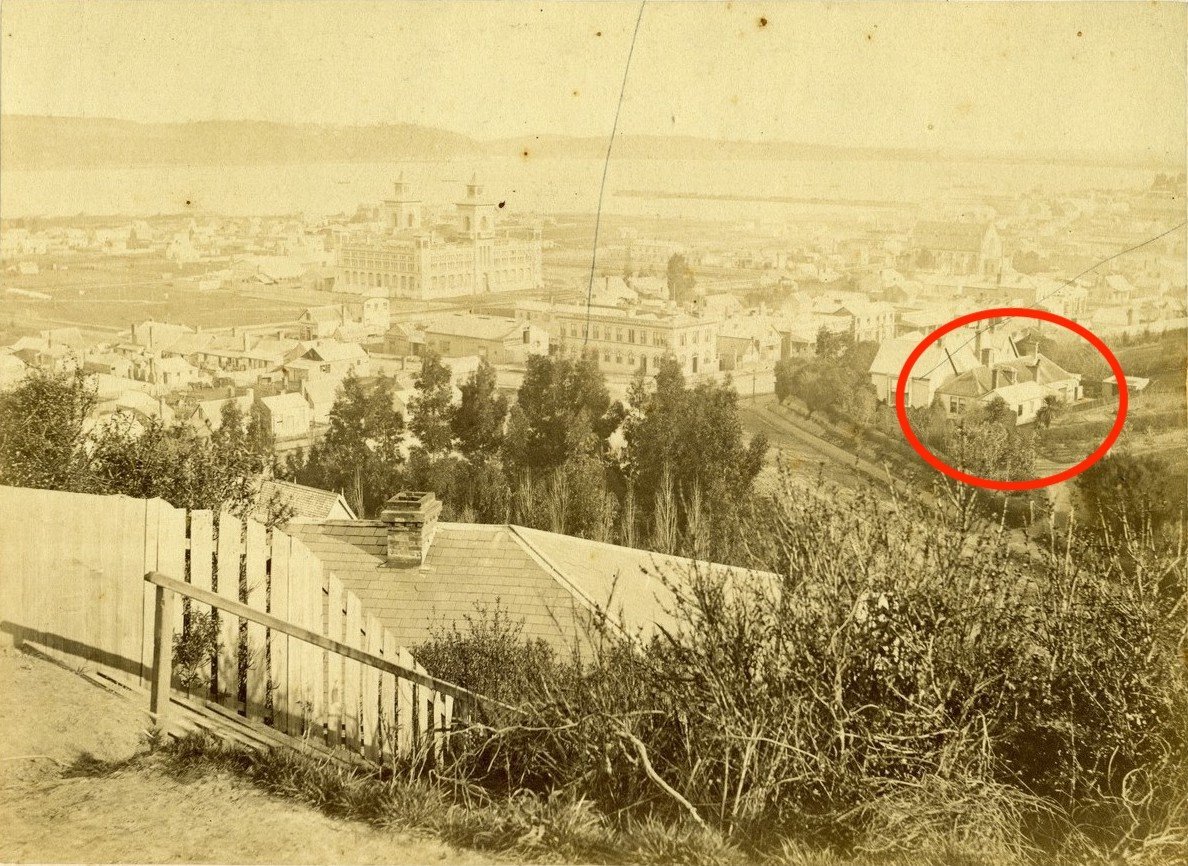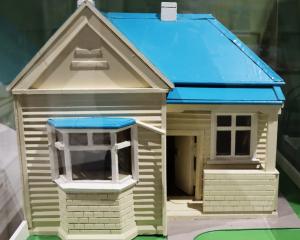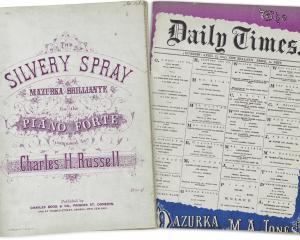

Kettle obviously gave some thought to where the settlement’s leader should live in anticipation of the arrival of the first party of settlers. His survey team erected a substantial house in the wattle-and-daub style, made by interlacing supplejacks with timber posts cut from the bush, then slathering a mix of clay and chopped flax to provide an exterior surface that would set hard in the sun. Totara was split to provide shingles, overlapped as its roofing material.

Ironically, the settlement’s leader, Captain William Cargill, never lived in the house, not even for a night. The surveyors had chosen a site for him at the corner of what became Pitt and London Sts, overlooking the North Dunedin flat. Today that might be a good place for Dunedin’s first citizen to live, affording a great view over much of the central city and proximity to many of its citizens. But not in 1848. The earliest settlers congregated far to the south — around the Māori waka landing place at the outlet of the Toitū stream.

Dr Purdie’s cottage was for a long time the last lonely house between the village of Dunedin, effectively then all to the south of the Octagon, and those early pioneers who chose to settle in North East Valley, some two kilometres away across what was a swampy bog, covered with flax bushes and waterways. Its lights twinkling through the black of night were the only wayfaring sign for travellers crossing the North Dunedin swamp to head home to the valley in the 1850s.

For more
- For more on the story of the Otago pioneers, see the museum’s latest documentary The Journey to New Edinburgh at www.toituosm.com/whats-on/watch








![‘‘Neil’s Dandelion Coffee’’. [1910s-1930s?]. EPH-0179-HD-A/167, EPHEMERA COLLECTION, HOCKEN...](https://www.odt.co.nz/sites/default/files/styles/odt_landscape_small_related_stories/public/slideshow/node-3436487/2025/09/neils_dandelion_coffee.jpg?itok=fL42xLQ3)



